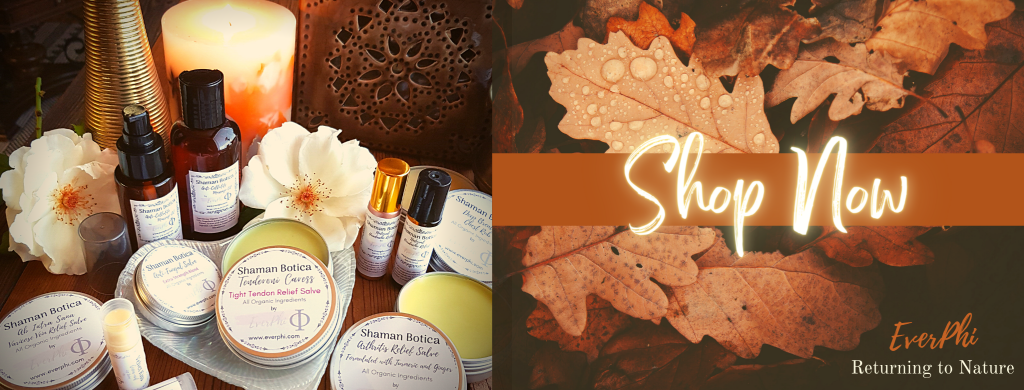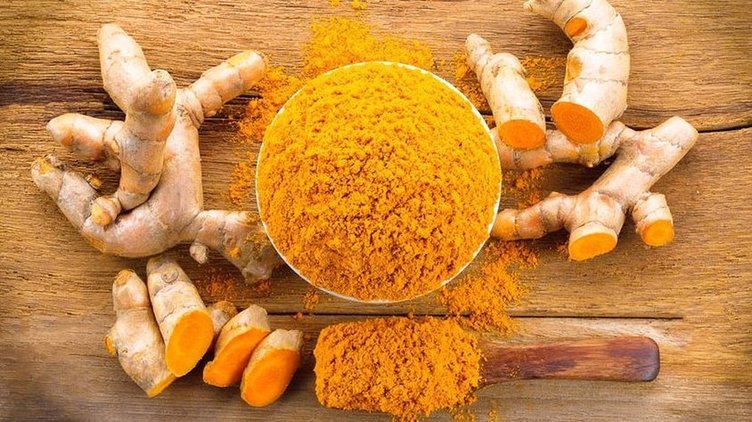
Turmeric essential oil is a substance extracted from the perennial herbaceous plant Curcuma longa L., belonging to the same family of ginger (Zingiberaceae).
Curcuma longa grows to a height of about 90cm and has yellow flowers. The root is bright, orange, with a thin brownish skin.
Native to southern India and Indonesia, turmeric is grown on the continent and islands of the Indian Ocean.
Volatile oils are obtained by steam or CO2 distillation methods using the solvent hexane. The parts of the plant used for extraction are the tuberous rhizomes, underground roots, leaves and flowers. However, essential oils come mainly from roots and rhizomes, due to the better yield and the relevance of the chemical components for therapeutic purposes.
The resulting essence is yellow, and has an interesting smell that can be described as sweet, woody and with notes of spices.
Turmeric oil, normally blends well with: Ginger, Clary Sage, Clove, Cinnamon, Nutmeg, Ylang Ylang, Neroli, Cardamom, Helichrysum, Juniper, Lavender and Orange Essential Oil.
The use of turmeric goes back almost 4000 years to the Vedic culture in India, where it had culinary, as well as religious and ceremonial uses.
Turmeric probably arrived in China in 700 BC, to East Africa in 800 BC, to West Africa in 1200 BC. and to Jamaica, in the eighteenth century.
In 1280, Marco Polo, described the turmeric very impressed, since it exhibited qualities highly similar to those of saffron. The plant was called Indian saffron during the Middle Ages because of its orange-yellow color.
According to the Sanskrit medical treatises and the Ayurvedic and Unani systems, turmeric has a long history of medicinal use in South Asia.
Topically, turmeric essential oil is traditionally used as an antiseptic. Additionally, it is known to help in the natural skin care, to reduce acne and facial hair in women.
Today, turmeric is widely cultivated in the tropics and has many different names in different cultures and countries.
The name turmeric is derived from the Latin word terra merita, that refers to the color of ground turmeric, which resembles a mineral pigment.

The rhizome oils contained more than 47 chemical constituents, being the most important: αr-turmerone (31-32%), turmerone, curlone, αr-curcumene, p-cymene and 1.8 cineole.
On the other hand, root oil contained about 43 compounds and the main constituents are αr-turmerone (46,8%), αr-curcumene, dehydrocurcumene and p-cymene.
Turmeric has a long history as a medicinal agent, both, spice and dye. However, turmeric essential oil is an extremely impressive natural health agent, which has some of the most promising anticancer effects, among the three varieties.
This is not surprising, when considering the fact that at least 20 of its molecules are antibiotics, 14 are known to prevent cancer, 12 are antitumor, another 12 are anti-inflammatory and there are at least 10 different types of antioxidants in turmeric.
Like turmeric powder, turmeric oil is also antiallergic, antibacterial, antimicrobial, antifungal, antiparasitic and antiviral. Besides, it is a strong relaxing and balancing substance. In addition, according to Ayurvedic medicine, this energizing herb is intended to support the imbalance of the Kapha body type.
Considering all these excellent components contained in turmeric oil, it is not surprising that it has the following health benefits to offer:
Turmeric has truly amazing health benefits, from functioning as a potential anti-cancer food to being an essential oil for depression. Here are some of the most impressive ways in which turmeric essential oil can improve your health or the health of someone you know.
A study conducted in 2013 by the Division of Food Sciences and Biotechnology of the University of Kyoto in Japan, showed that both, aromatic turmerone (ar-turmerone) in turmeric essential oil, as well as curcumin (the main active ingredient in turmeric), have the ability to help fight colon cancer in animal models, which is promising for humans struggling with the disease.
Combination of curcumin and turmerone administered orally, at low and high doses, effectively suppressed tumor formation.
The results of the study published in BioFactors, led researchers to conclude that: turmerone is a new candidate for the prevention of colon cancer.
Besides, they think that the use of turmerone in combination with curcumin, can become an effective means of natural prevention of colon cancer associated with inflammation.
Studies have shown that turmerone, an important bioactive compound in turmeric oil, inhibits the activation of microglia.
Microglia is a type of cell located along the brain and spinal cord. The activation of microglia is a telltale sign of brain diseases, so the fact that turmeric essential oil contains a compound that stops the activation of these harmful cells, is a great help for the prevention and treatment of brain diseases.
Another study using animals, showed that both, in vitro and in vivo aromatic turmerone, causes neuronal stem cells to rapidly increase in number.
It is believed that turmeric aromatics of turmeric essential oil is a natural and promising way to support the regeneration necessary to correct neurological diseases such as Parkinson’s disease, Alzheimer’s, spinal cord injury and stroke.
The anticonvulsant properties of turmeric oil and its sesquiterpenoids (ar-turmerone, α-, β-turmerone and α-atlantone), have previously been demonstrated in both, zebrafish models and mouse models with chemically induced seizures. A more recent investigation in 2013 showed that aromatic turmerone has anticonvulsive properties in models of mice with acute seizures. Turmerone was also able to modulate the expression patterns of two genes related to seizures in zebrafish.
Traditionally, turmeric has been used in Chinese and Indian Ayurvedic medicine to treat arthritis, since it is known that the active components of turmeric block cytokines and inflammatory enzymes. That is why it is known as one of the best essential oils for arthritis.
Studies have shown the ability of turmeric to help reduce pain, inflammation and stiffness related to rheumatoid arthritis and osteoarthritis.
A study published in the Journal of Agricultural and Food Chemistry, evaluated the anti-arthritic effects of turmeric essential oil, and found that raw turmeric essential oil administered orally, at a dose that would correspond to 5,000 milligrams per day in humans, it had a modest anti-inflammatory effect on the joints of animal subjects.
Turmeric is well known in the world of holistic health for its ability to help improve liver health. The liver is our most vital detoxifying organ, and its condition affects the whole body.
Studies have shown that turmeric is hepatoprotective (protective of the liver), which is partly due to the anti-inflammatory activity of turmeric.
A research published in BMC Complementary & Alternative Medicine, specifically examined methotrexate (MTX) and liver toxicity caused by MTX. MTX is an antimetabolite widely used in the treatment of cancer and autoimmune diseases,
The study showed that turmeric helped protect the liver from the liver toxicity induced by MTX, functioning as a preventive cleansing of the liver.
Consequently, the fact that turmeric could protect the liver from such a strong chemical, demonstrates how amazing it can be as a natural liver aid.
In addition, animal studies showed that antioxidant enzymes in the blood, increased after the administration of turmeric oil. Besides, it had a significant effect on antioxidant enzymes in the liver tissue of mice after treatment for 30 days.
All this combined, helps to understand why it is believed that turmeric helps both, to treat and prevent liver diseases.
The research published in the Journal of Cellular Biochemistry, showed that aromatic turmerone found in turmeric essential oil, inhibited the unwanted enzymatic activity and the expression of MMP-9 and COX-2 in human breast cancer cells.
Turmerone also significantly inhibited TPA-induced processes such as invasion, migration and colony formation in human breast cancer cells.
It is a highly significant finding that the components of turmeric essential oil can inhibit the capabilities of TPA, since TPA is a potent tumor promoter.
A study published in the International Journal of Molecular Medicine, examined the effects of aromatic turmerone on the DNA of human leukemic cell lines.
The investigation showed that: Turmerone, caused the selective induction of programmed cell death in the human leukemia cells Molt 4B and HL-60. However, turmerone, unfortunately, did not have the same positive effect on human stomach cancer cells.
This is a promising research to find ways to naturally fight leukemia.
Turmeric essential oil is considered a relaxant and a strong balancer of mood. Studies have shown that it can help fight against two extremely common mood disorders, depression and anxiety.
As an essential oil effective for anxiety and depression, it can improve mood and positive feelings.
A randomized, double-blind, placebo-controlled study of 56 individuals with major depressive disorder was published in 2014, in the Journal of Affective Disorders.
The results of the study showed that the BCM-95 curcumin supplement not only successfully reduced the general symptoms of depression, but also functioned as an anti-anxiety agent when taken over a period of eight weeks.
Curcumin BCM-95 is manufactured by synergistically combining curcumin and turmeric essential oil without synthetic additives.

The anti-inflammatory capacity of turmeric essential oil may actually be useful for the nasal congestion that normally accompanies the common cold.
Simply add a few drops of turmeric oil to a diffuser or bowl of hot water, and inhale the vapors to quickly relieve that stuffy nose.
Inhalation of turmeric essential oil, also helps fight germs that caused colds and flu.
Turmeric is an excellent antiseptic. A renowned Nutritionist and Chinese Herbalist Daniel C. Luthi, in his extensive research on Atopic Dermatitis says that: The yellow pigment known as Curcumin present in Turmeric, has anti-inflammatory properties and is an excellent remedy to inhibit the release and production of leukotrienes and other mediators that are inflammatory. On the other hand, helps in removing the toxins from the body that cause eczema and other skin disorders.
It can be used topically to help soothe joints, muscle pain and even discomfort caused by arthritis.
Turmeric essential oil is most often used topically, but it can also be ingested if a high quality oil is used, and small doses are consumed (1 drop of essential oil).
Like many other essential oils, turmeric oil can also make your skin more sensitive to UV rays. For this reason, the necessary precautions must be taken to avoid exposing the treated skin to sunlight. Also, there is the alternative to apply topically at night.
Aromatherapy is effective for stress relief. 2-3 drops of turmeric essential oil should be diffused or inhaled.
For external use, including inflammation and pain relief, you can create a massage oil by diluting 5 drops of turmeric essential oil with 5 drops of a carrier oil (such as jojoba or coconut oil) and applying it to the affected areas.
For internal use, ONLY very high quality oils should be used. Add 1 drop of turmeric essential oil to the water, or mix 1 drop of turmeric oil with a teaspoon of honey or a shake.
Generally, good quality oils, that is, 100% pure and not mixed with other substances, can be found in specialized natural herb stores.
Tips for a better performance and duration of the product: